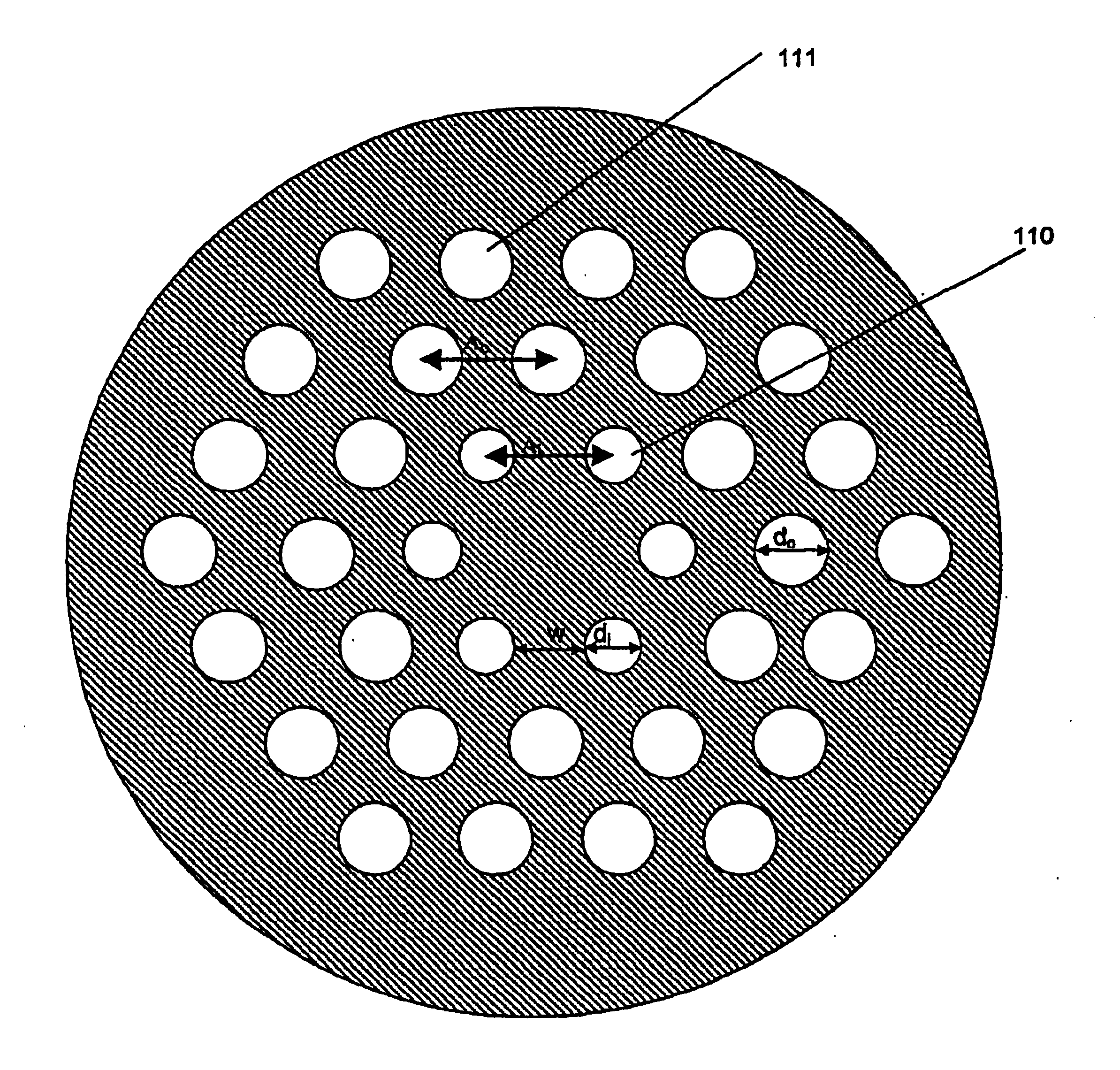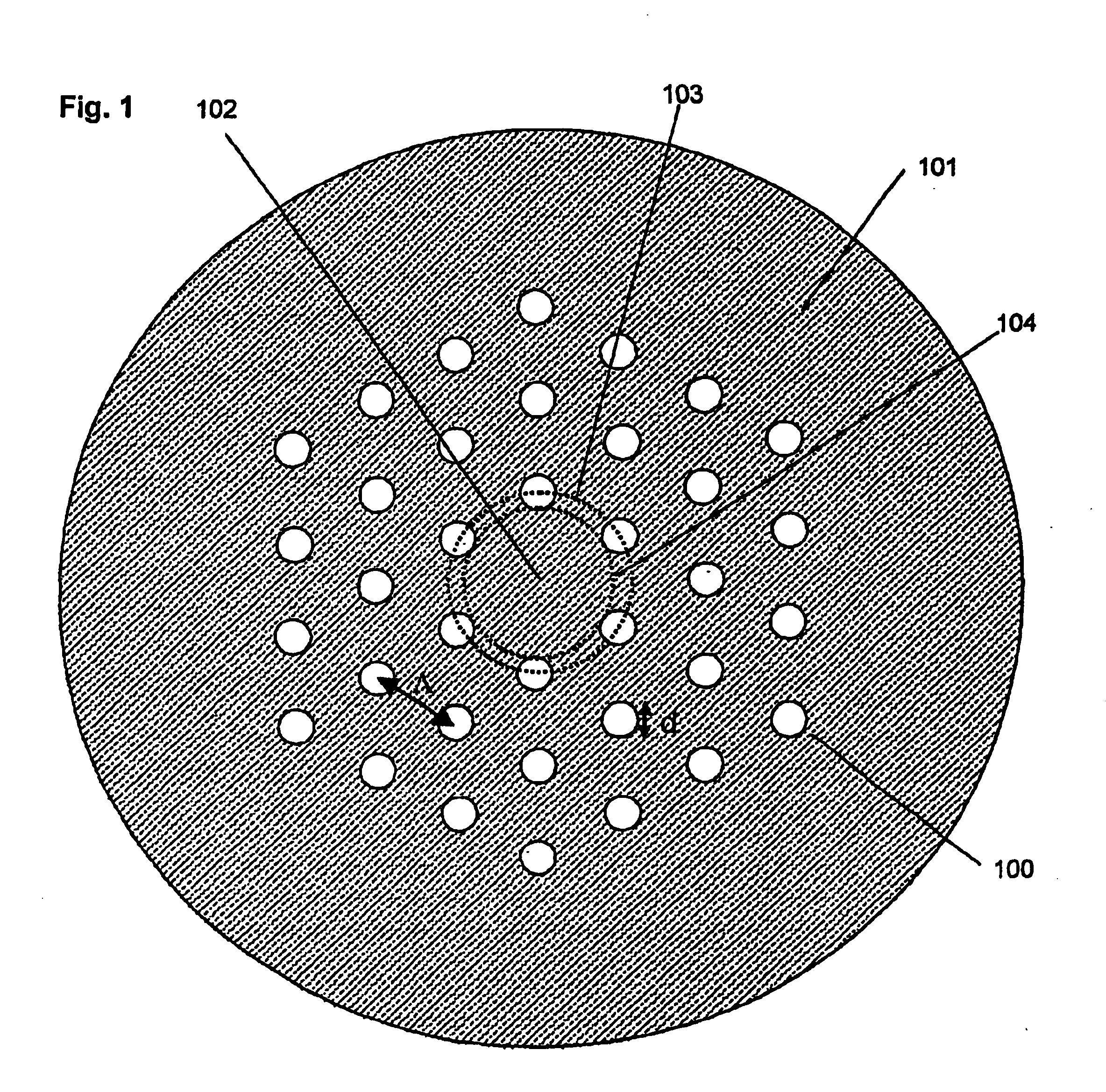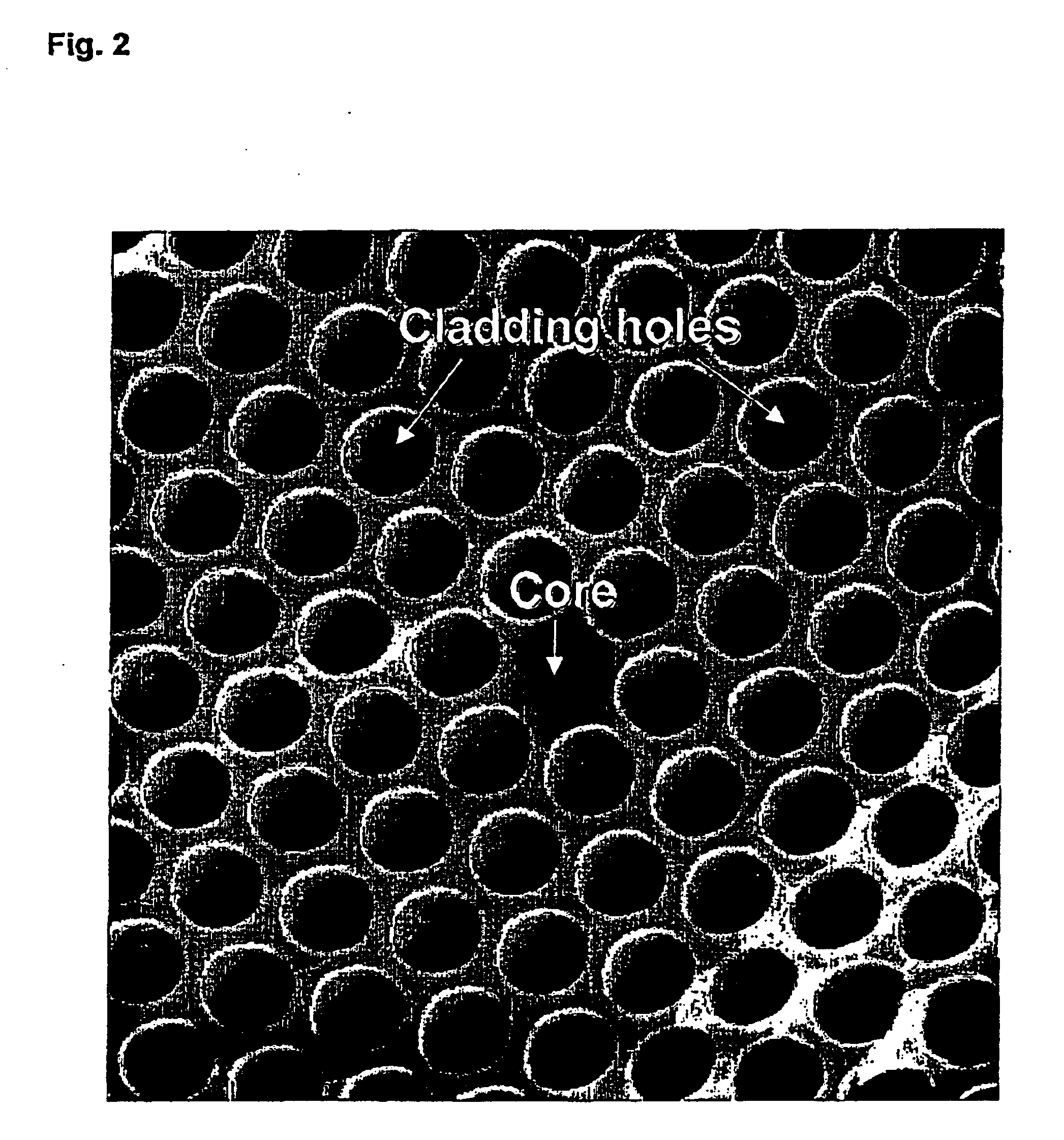Optical fibres with special bending and dispersion properties
a technology of optical fibres and micro-bending, applied in the field of optical fibres, can solve the problems of multi-mode fibres and filling fractions of 18% or smaller, and achieve the effect of improving the macro-bending properties and the refractive index
- Summary
- Abstract
- Description
- Claims
- Application Information
AI Technical Summary
Benefits of technology
Problems solved by technology
Method used
Image
Examples
Embodiment Construction
ent invention where a non-circular outer cladding is used. The orientation of the outer cladding is determined from the micro-structure in or around the core region. The outer cladding shape determines mechanically which bending direction(s) will be dominant for the fibre, and avoids bending directions that are most harmful for the fibre.
[0087]FIG. 18 shows schematically a fibre according to the present invention where an outer cladding with a non-circular and non-equilateral polygonal outer shape is used. During bending, this shape will mechanically favour bending of the fibre in certain direction compared to others and thereby provide new means for controlling macro-bending losses properties as well as stripping off of higher order modes, and, thereby, expand the single-mode operation range of the fibre.
[0088]FIG. 19 shows schematically another fibre according to the present invention where an elliptical outer shape is used and the overcladding is made from the same material as th...
PUM
| Property | Measurement | Unit |
|---|---|---|
| wavelengths | aaaaa | aaaaa |
| operating wavelength | aaaaa | aaaaa |
| bend radius | aaaaa | aaaaa |
Abstract
Description
Claims
Application Information
 Login to View More
Login to View More - R&D
- Intellectual Property
- Life Sciences
- Materials
- Tech Scout
- Unparalleled Data Quality
- Higher Quality Content
- 60% Fewer Hallucinations
Browse by: Latest US Patents, China's latest patents, Technical Efficacy Thesaurus, Application Domain, Technology Topic, Popular Technical Reports.
© 2025 PatSnap. All rights reserved.Legal|Privacy policy|Modern Slavery Act Transparency Statement|Sitemap|About US| Contact US: help@patsnap.com



